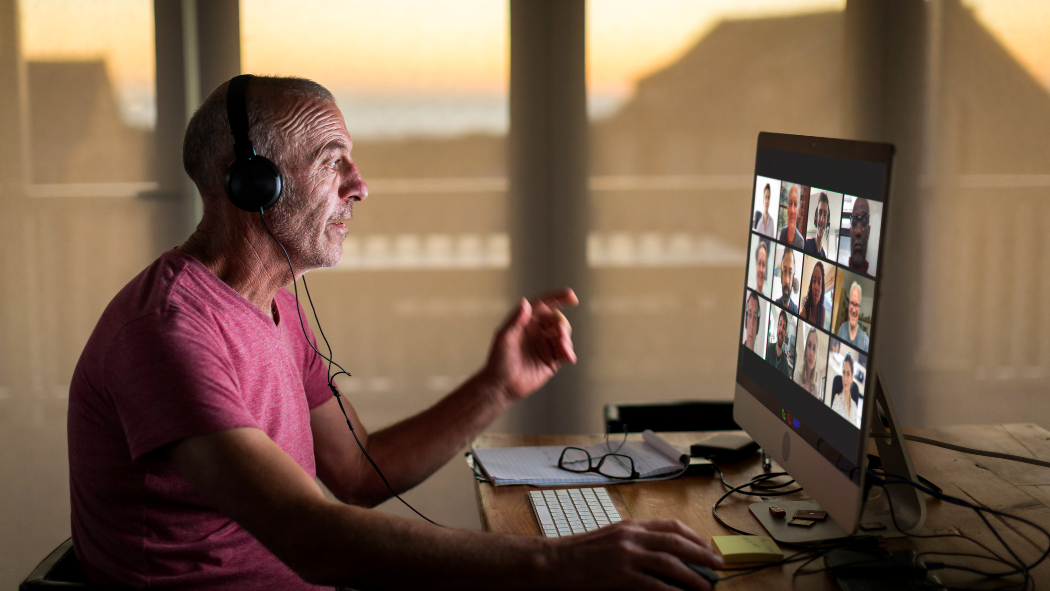
Every so often something “seismic” happens to the way we work. The invention of electricity, for example, led to the Industrial Revolution. The invention of the Internet, led to the digital revolution. And, the global COVID-19 pandemic has led to the hybrid revolution—an inflection point in the history of work.
“The global pandemic has normalized remote work,” said Alexia Cambon, director of research at Gartner, during the consultancy’s recent webinar titled, The Future of Work Reinvented: Seize this Unique Opportunity. “[This] was already starting to happen a little bit pre pandemic, which means we are about to see a dramatic shift to an era of hybrid work. Hybrid work has a lot of different connotations and we have heard a lot of different definitions of it. But in its simplest form it means we aren’t bound to any one location in how we work. We can work at home, we can work in an office, or we can work in a third space. [Our research has shown that] employees have really enjoyed what remote working means.”
Indeed, COVID-19 gave workforces all over the world a taste of remote work, which has raised questions about why we work the way we do, and what the path forward should look like. A recent Gartner survey shows that 83% of all employees want to work in either a remote or hybrid arrangement, and only 17% of employees prefer to go back on-site full time. According to Cambon, COVID has pushed businesses into conducting one of the “biggest experiments in the history of work.”

The Heart of a Healthy Workforce
Recent Cigna research demonstrates an inextricable link between the health of the American workforce, the productivity of U.S. businesses, and the vibrancy of the economy
In the Gartner webinar, Cambon, along with two of her colleagues at the research firm, dive into why hybrid work—for employees that can do their jobs remotely—is more than a location decision. They also go deep into what needs to happen in order for companies to achieve both talent well-being and business outcomes. Some of the key takeaways are below.
Hybrid: More than a Location; Flexibility is Key
Gartner research shows that while many companies have had to manage a remote workforce for the last 18 months, many haven’t actually made any changes to how they get work done. This is a problem, Cambon said, and it is the leading cause for employee well-being concerns around fatigue and burnout.
“We are still attached to very outdated ways of working that we inherited in prior eras,” Cambon said, adding that everything we’ve ever known about the workplace is now being tested: When we work, where we work, and how we work. The good news is, she said, that we have all the tools we need to do asynchronous work today. The future of an organization’s success, Cambon said, is rejecting the archaic work design structures, such as face-to-face being the only real way to conduct business (in some cases) and that offices are the only way to be truly productive. The truth is, Cambon said, there are cost advantages to having some of your workforce in a hybrid model, both from a travel and expenses perspective as well as real estate costs.
The pandemic has also shown a light on the different personality types that exist in our workforces—and they don’t all thrive in a one-size fits-all approach to work. Businesses have attached to this idea that giving everyone the same experience is fair and that it will set them up for success, but that’s not actually the case. “We’ve actually seen the opposite in the last year,” Cambon said. “When you give employees the flexibility that helps them create the work patterns that make them productive, that keeps them healthy.”
Suzanne Adams, a VP analyst at Gartner, said that the biggest shift that has taken place is around who makes the decision on where, how and when people work. It has always been up to the employer, but this notion was “broken apart when we sent everyone home,” she said. “There’s no way to put it back in place again.” Instead, Adams says it needs to be a unilateral decision, agreed upon by the employee and employer. The goal is quality of output, outcomes, and deliverables, as well as employee well-being.
Nicole Kyle, senior director off advisory for Gartner, added that she, and Gartner, believe in the workplace as a great tool to add value to certain types of employee experiences. But coming into the office doesn’t need to be a daily routine for every employee. Her advice: Think about the employee experiences that can be enhanced by co-location.
The Future of Work and Employee Well-Being is Hybrid
Today, approximately 18 months after the first cases of COVID-19, the work environment is rapidly changing. Pre-pandemic most businesses worked in an in-person environment and had workplace processes and practices to support that. People came in from 9 to 5 into a building where they spent time together. That was the default.
The remote environment is fundamentally different. There are fewer signals to disconnect at the end of the day in a remote environment, for example. There are also much less instances of spontaneity and serendipity, Cambon said. And of course, more meetings, which we have seen can be cognitively draining. Companies must now be thinking about how to change the model.
In fact, she said, the reason why employee well-being, fatigue and burnout are an issue right now is because most companies have tried to force a square peg (in-person model) into a triangular hole (remote environment). But, Cambon believes that as more people get the vaccines, and more companies give their workforces the option to return to the office – we will be entering a new hybrid environment, one where employees have completely different expectations.
Workforce practices today must be designed in the context of both co-located teams as well as distributed teams. This will mean understanding when synchronous vs. asynchronous work should happen. It also means understanding when employees should work together, apart, and when it makes sense for them to work together, together. And there’s no one-size-fits-all approach for every company. It’ll be different for everyone.
“We don’t want to just virtualize what we used to do in a prior era, because that’s what we have always done,” Cambon said. “I think we want to start from a different place—to shed ourselves from all of these old assumptions and really think carefully about this new environment.”
At Cigna, the pandemic has addressed the way our organization works together to best serve our customers around the world. Many of our employees shifted from an office setting to working from home when the pandemic started. Now that some of our offices are reopening, most employees will have the opportunity to work in a flexible arrangement, if their job responsibilities allow them to do so.

A Healthy Workforce is an Employer Imperative
New Cigna research finds employers are the key to linking employee health and productivity, business success, and overall economic vitality.